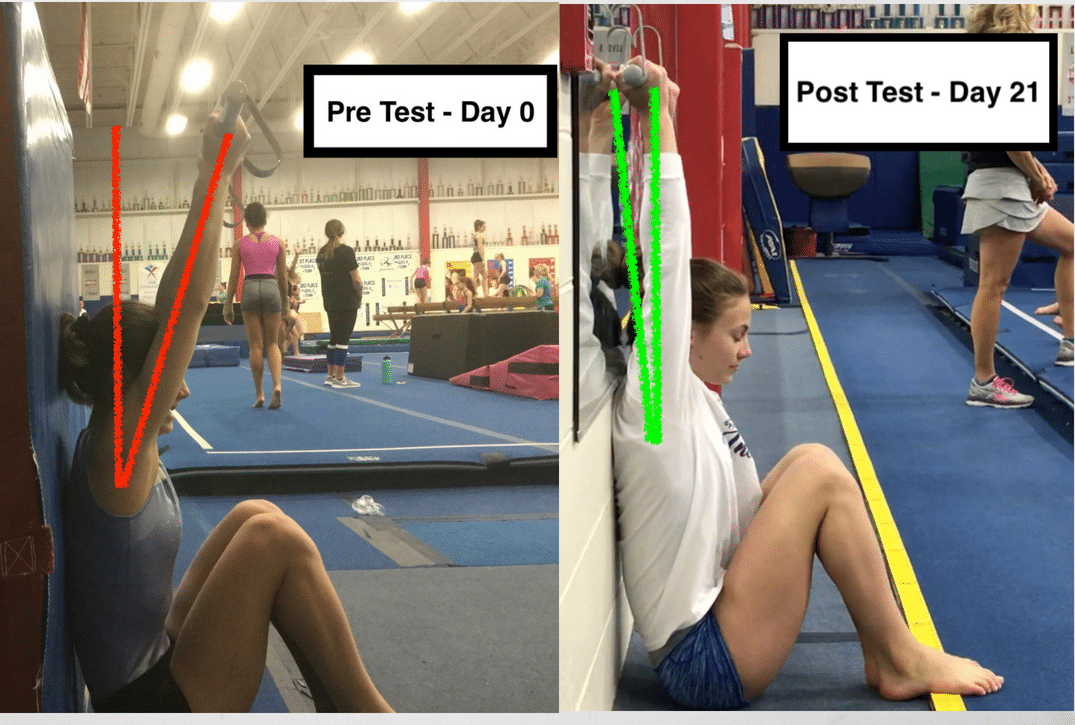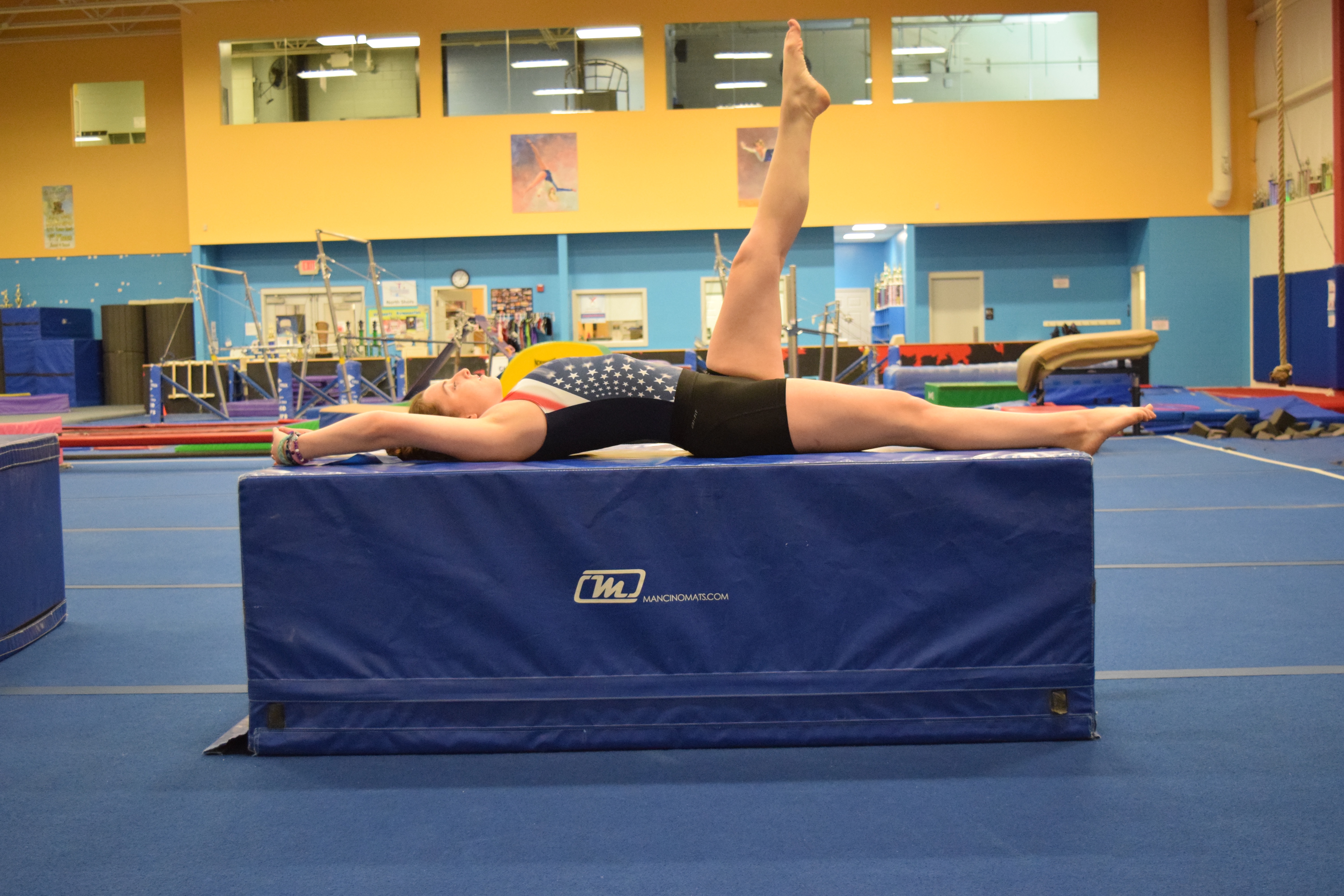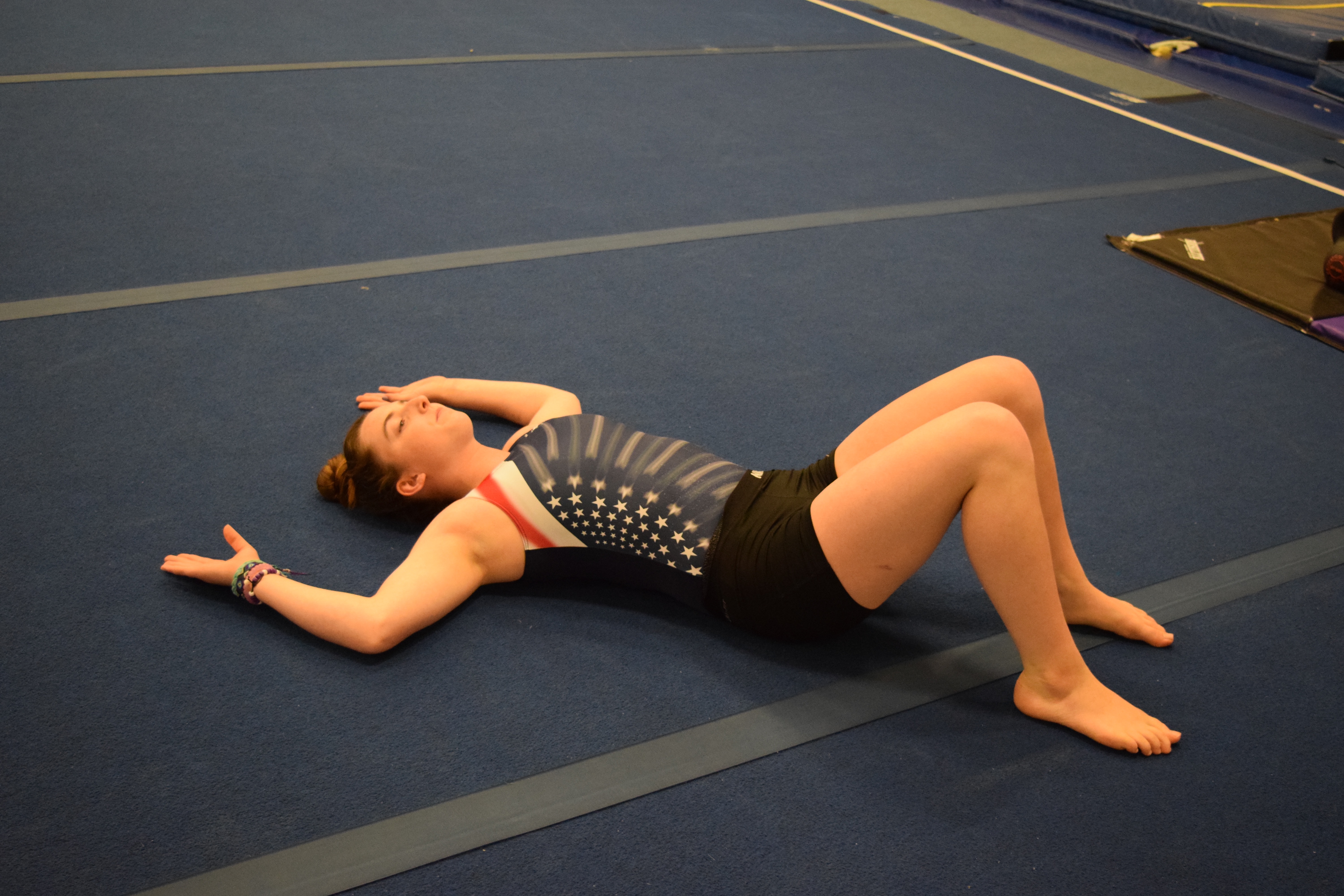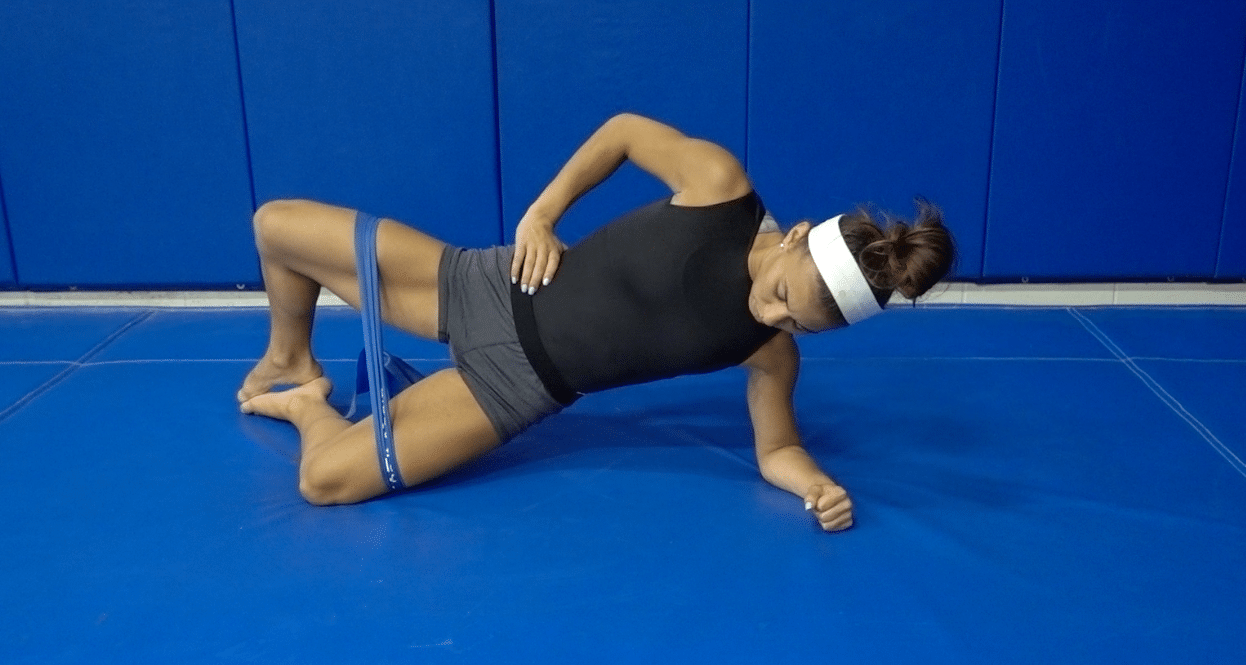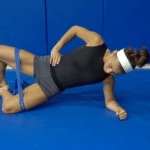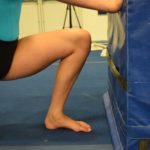Screening Overhead Mobility in Gymnasts (Application of The JBJ Approach To Handstands Pt 3)
Last month I started writing about how I apply the Joint by Joint Theory proposed by Gray Cook/Mike Boyle into a basic gymnastics movement, the handstand. In Part I of this article series I went over some background info, and talked about the key role of hand/wrist interactions as it applies to handstand work in gymnasts. In Part II I moved up to the elbow discussing it’s role in stability and also some issues related to Osteochondritis Dessicans. This week in part 3 I wanted to start discussing the next link in the chain, shoulder mobility. I wanted to talk about the important of screening for overhead mobility and how I go about it with some quick tests, as limited shoulder mobility may be a huge factor in many common gymnastics injures like lower back pain, local shoulder pain, elbow pain, and wrist pain.
Shoulder Mobility Screening
In the most basic form, the gymnast needs to be able to put get their arms far overhead in a fully body extended position, without compensating. I can’t tell you how many gymnasts I have worked with either as patients or my own gymnasts who are hyper compensators in their basic handstand positions. There are a few screening tests that I like to use with gymnasts to see what their mobility is, and also what their “go to” movement pattern is to achieve a handstand position.
For all of these tests, some important areas to look at are:
- Do they excessively arch their back to get their arms overhead, especially in the last bits of overhead motion
- Do they widen their arm position overhead or rotate their hands. They should be cued to get their arms close to their ears
- Do they push their head forward to cheat, or hold their breath for false stabilization
- Can they go significantly further passively (someone pushing a little) than actively (them doing it on their own)
1. Resting Unweighted Handstand Position – The best place to start is to look at an unweighted, resting alignment and position of the gymnasts body. This is the most basic way to get an overall picture for their handstand mobility, but you can also tune in to their shoulder angle, middle back, lower back, and hip position. Remember, the lower back naturally has a small curve to it so it’s okay to have some. Lots of space is not good though.
2. Back To Wall Shoulder Flexion In Sitting – After looking at overall static position and alignment, I like to get a picture of what their upper body is capable of doing for moving overhead motion. I also like to do this to see how they may compensate. I like to start in a sitting position (which you will see here) and then also move to a standing position (not shown below). These constraints are challenging, but due to the extreme active mobility required overhead for gymnastics, especially to help spare the lower back, I like these variations. I do this first just with arms overhead, then with a floor bar in undergrip and overgrip. You may be very surprised to see what happens when you have them do this with a bar, especially with undergrip positions. Like I said some lower back arch is usually present normaly, but it should be drastic.
First here is a “functional” example first showing full range first without the bar, then with a floor bar in over grip and undergrip
Then here is a “dysfunctional” example where you can limited overhead mobility (one side more than the other), then with the bar in overgrip, then in undergrip. Her issue came down to lat tissue tightness, and since the front/under grip tensions this area you’ll see she struggles more with under grip.
Want To Learn More?
If you are looking for some more specific shoulder flexibility drills and circuits to download, you can check this free PDF out here, full of checklists and video walk throughs.
Download My New Free
10 Minute Gymnastics Flexibility Circuits
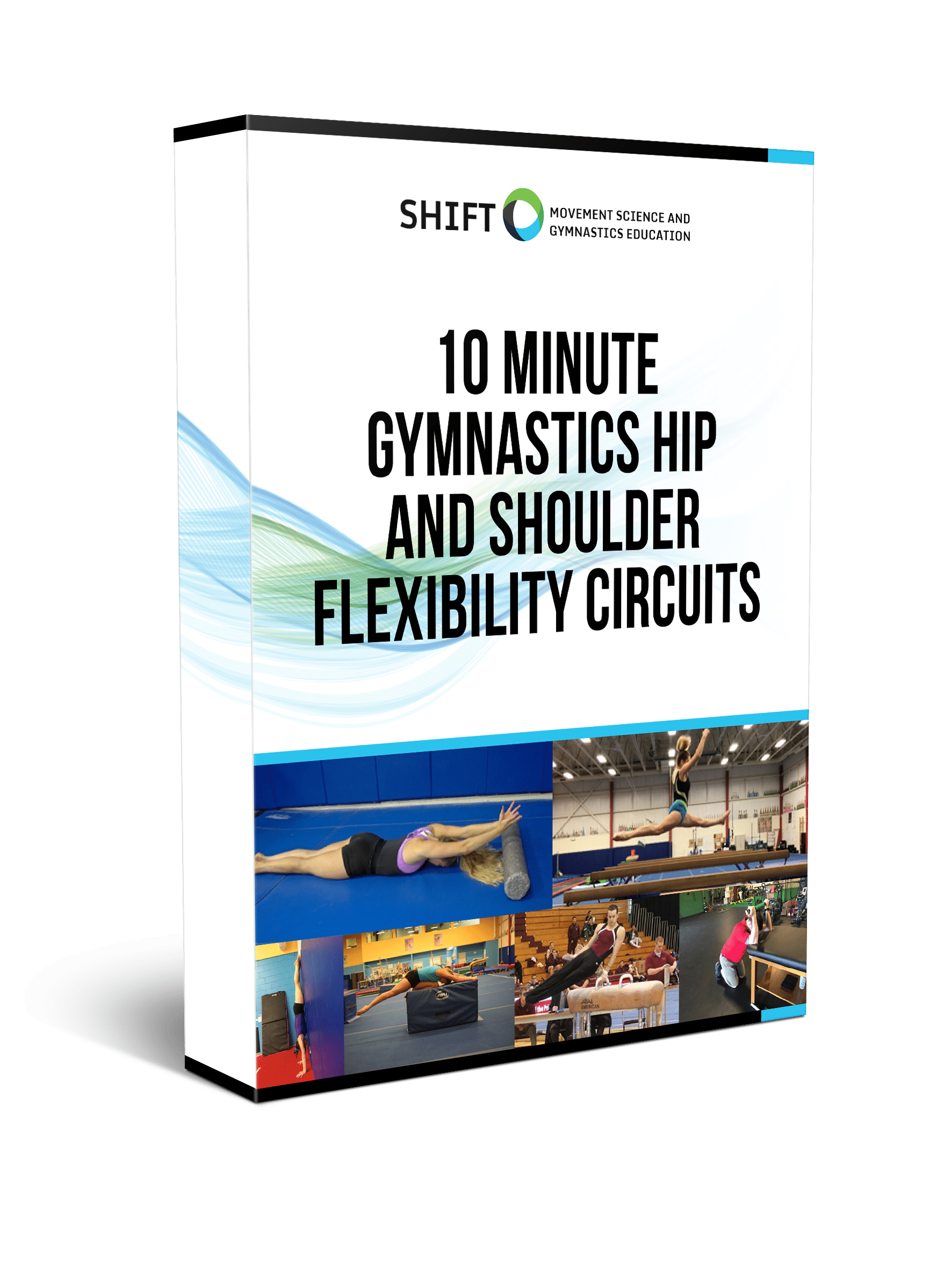
- 4 full hip and shoulder circuits in PDF
- Front splits, straddle splits, handstands and pommel horse/parallel bar flexibility
- Downloadable checklists to use at practice
- Exercise videos for every drill included
Concluding Thoughts
Between these three quick tests, you can get a pretty good idea of if that gymnast is missing overhead shoulder complex motion, and if they do have missing motion what they do to compensate. Obviously many more factors go into this when you start to use this overhead motion at high speed/force during gymnastics stills. Now, the “why” behind why someone has limited overhead motion can be quite a complex to break down and isolate the biggest driving factor. I strongly suggest that if you screen out a gymnast who really struggles with overhead motion, or has pain with overhead motion, they need to be evaluated and assessed early by someone who is trained in movement.
There are many different reasons ranging from lacking thoracic mobility, reduced upward rotation of the shoulder blade or poor scapular stabilization, neuromuscular deficits/control issues, soft tissue restrictions, and more. A few of these I will mention in weeks to come, but just note that it can be a multidimensional process that needs a trained eye to break down. I hope that this post may help set the stage for next week when I offer up some strategies to improve overhead motion. Take care,
Dave

